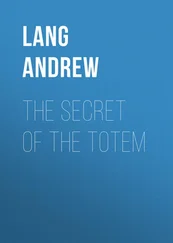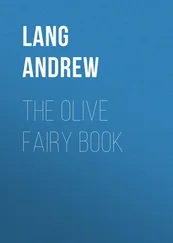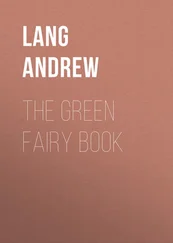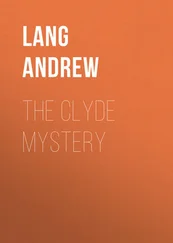Andrew Lang - The Mystery of Mary Stuart
Здесь есть возможность читать онлайн «Andrew Lang - The Mystery of Mary Stuart» — ознакомительный отрывок электронной книги совершенно бесплатно, а после прочтения отрывка купить полную версию. В некоторых случаях можно слушать аудио, скачать через торрент в формате fb2 и присутствует краткое содержание. Жанр: foreign_antique, foreign_prose, на английском языке. Описание произведения, (предисловие) а так же отзывы посетителей доступны на портале библиотеки ЛибКат.
- Название:The Mystery of Mary Stuart
- Автор:
- Жанр:
- Год:неизвестен
- ISBN:нет данных
- Рейтинг книги:4 / 5. Голосов: 1
-
Избранное:Добавить в избранное
- Отзывы:
-
Ваша оценка:
- 80
- 1
- 2
- 3
- 4
- 5
The Mystery of Mary Stuart: краткое содержание, описание и аннотация
Предлагаем к чтению аннотацию, описание, краткое содержание или предисловие (зависит от того, что написал сам автор книги «The Mystery of Mary Stuart»). Если вы не нашли необходимую информацию о книге — напишите в комментариях, мы постараемся отыскать её.
The Mystery of Mary Stuart — читать онлайн ознакомительный отрывок
Ниже представлен текст книги, разбитый по страницам. Система сохранения места последней прочитанной страницы, позволяет с удобством читать онлайн бесплатно книгу «The Mystery of Mary Stuart», без необходимости каждый раз заново искать на чём Вы остановились. Поставьте закладку, и сможете в любой момент перейти на страницу, на которой закончили чтение.
Интервал:
Закладка:
In August, Mary, Bothwell, Moray, and Darnley hunted in Meggatdale, the moorland region between the stripling Yarrow and the Tweed. They had poor sport: poachers had been busy among the deer. Charles IX., in France, now learned that the royal pair were on the best terms; [72] Cheruel, Marie Stuart et Catherine de Médicis , p. 47.
and Mary’s Inventories prove that, in August, she had presented Darnley with a magnificent bed; by no means ‘the second-best bed.’ In September she also gave him a quantity of cloth of gold, to make a caparison for his horse. [73] Robertson, Inventories , p. 167.
Claude Nau reports, however, various brutal remarks of Darnley to his wife while they were in Meggatdale. By September 20, Mary, according to Lethington, reconciled Bothwell and himself. This was a very important event. The reconciliation, Lethington says, was quietly managed at the house of a friend of his own, Argyll, Moray, and Bothwell alone being present. Moray says: ‘Lethington is restored to favour, wherein I trust he shall increase.’ [74] Bain, ii. 300.
This step was hostile to Darnley’s interests, for he had attempted to ruin Lethington. It is certain, as we shall see, that all parties were now united in a band to resist Darnley’s authority, and maintain that of the Queen, though, probably, nothing was said about violence.
At this very point Buchanan, supported and probably inspired by Lennox, makes the guilty intimacy of Mary and Bothwell begin in earnest. In September, 1566, Mary certainly was in Edinburgh, reconciling Lethington to Bothwell, and also working at the budget and finance in the Exchequer House. It ‘was large and had pleasant gardens to it, and next to the gardens, all along, a solitary vacant room,’ says Buchanan. But the real charm, he declares, was in the neighbourhood of the house of David Chalmers, a man of learning, and a friend of Bothwell. The back door of Chalmers’s house opened on the garden of the Exchequer House, and according to Buchanan, Bothwell thence passed, through the garden, to Mary’s chamber, where he overcame her virtue by force. She was betrayed into his hands by Lady Reres. [75] Detection (1689), p. 4.
This lady, who has been mentioned already, was the wife of Arthur Forbes of Reres. His castle, on a hill above the north shore of the Firth of Forth, is now but a grassy mound, near Lord Crawford’s house of Balcarres. The lady was a niece of Cardinal Beaton, a sister of the magic lady of Branksome, and aunt of one of the Four Maries, Mary Beaton. Buchanan describes her as an old love of Bothwell, ‘a woman very heavy, both by unwieldy age and massy substance;’ her gay days, then, must long have been over. She was also the mother of a fairly large family. Cecil absurdly avers that Bothwell obtained his divorce by accusing himself of an amour with this fat old lady. [76] Bain, ii. 440.
Knox’s silly secretary, Bannatyne, tells us that the Reformer, dining at Falsyde, was regaled with a witch story by a Mr. Lundie. He said that when Lady Atholl and Mary were both in labour, in Edinburgh Castle, he came there on business, and found Lady Reres lying abed. ‘He asking her of her disease, she answered that she was never so troubled with no bairn that ever she bare, for the Lady Atholl had cast all the pain of her child-birth upon her.’ [77] Bannatyne, Journal , p. 238. This transference of disease, as from Archbishop Adamson to a pony, was believed in by the preachers.
It was a case of Telepathy. Lady Reres had been married long enough to have a grown-up son, the young Laird of Reres, who was in Mary’s service at Carberry Hill (June, 1567). According to Dr. Joseph Robertson, Lady Reres was wet-nurse to Mary’s baby. But, if we trust Buchanan, she was always wandering about with Mary, while the nurseling was elsewhere. The name of Lady Reres does not occur among those of Mary’s household in her Etat of February 1567. We only hear of her, then, from Buchanan, as a veteran procuress of vast bulk who, at some remote period, had herself been the mistress of Bothwell.
A few days after the treasonable and infamous action of Bothwell in violating his Queen, we are to believe that Mary, still in the Exchequer House, sent Lady Reres for that hero. Though it would have been simple and easy to send a girl like Margaret Carwood, Mary and Margaret must needs let old Lady Reres ‘down by a string, over an old wall, into the next garden.’ Still easier would it have been for Lady Reres to use the key of the back door, as when she first admitted Bothwell. But these methods were not romantic enough: ‘Behold, the string suddenly broke, and down with a great noise fell Lady Reres.’ However, she returned with Bothwell, and so began these tragic loves.
This legend is backed, according to Buchanan, by the confession of Bothwell’s valet, George Dalgleish, ‘which still remaineth upon record,’ but is nowhere to be found. In Dalgleish’s confession, printed in the ‘Detection,’ nothing of the kind occurs. But a passage in the Casket Sonnet IX. is taken as referring to the condoned rape:
Pour luy aussi j’ai jeté mainte larme,
Premier, quand il se fist de ce corps possesseur,
Duquel alors il n’avoit pas le cœur.
In the Lennox MSS. Lennox himself dates the beginning of the intrigue with Bothwell about September, 1566. But he and Buchanan are practically but one witness. There is no other.
As regards this critical period, we have abundant contemporary information. The Privy Council, writing to Catherine de’ Medici, from Edinburgh, on October 8, make Mary, ten or twelve days before (say September 26), leave Stirling for Edinburgh, on affairs of the Exchequer. She offered to bring Darnley, but he insisted on remaining at Stirling, where Lennox visited him for two or three days, returning to Glasgow. Thence he wrote to Mary, warning her that Darnley had a vessel in readiness, to fly the country. The letter reached Mary on September 29, and Darnley arrived on the same day. He rode to Mary, but refused to enter the palace, because three or four of the Lords were in attendance. Mary actually went out to see her husband, apparently dismissed the Lords, and brought him to her chamber, where he passed the night. On the following day, the Council, with du Croc, met Darnley. He was invited, by Mary and the rest, to declare his grievances: his attention was directed to the ‘wise and virtuous’ conduct of his wife. Nothing could be extracted from Darnley, who sulkily withdrew, warning Mary, by a letter, that he still thought of leaving the country. His letter hinted that he was deprived of regal authority, and was abandoned by the nobles. To this they reply that he must be aimable before he can be aimé , and that they will never consent to his having the disposal of affairs. [78] Teulet, Papiers d’État , ii. 139-146, 147, 151. See also Keith, ii. 448-459.
A similar account was given by du Croc to Archbishop Beaton, and, on October 17, to Catherine de’ Medici, no friend of Mary, also by Mary to Lennox. [79] Frazer, The Lennox , ii. 350, 351.
We have not Darnley’s version of what occurred. He knew that all the powerful Lords were now united against him. Du Croc, however, had frequent interviews with Darnley, who stated his grievance. It was not that Bothwell injured his honour. Darnley kept spies on Mary, and had such a noisy and burlesque set of incidents occurred in the garden of Exchequer House as Buchanan reports, Darnley should have had the news. But he merely complained to du Croc that he did not enjoy the same share of power and trust as was his in the early weeks of his wedding. Du Croc replied that this fortune could never again be his. The ‘Book of Articles’ entirely omits Darnley’s offence in the slaying of Riccio. Du Croc was more explicit. He told Darnley that the Queen had been personally offended, and would never restore him to his authority. ‘He ought to be well content with the honour and good cheer which she gave him, honouring and treating him as the King her husband, and supplying his household with all manner of good things.’ This goes ill with Buchanan’s story about Mary’s stinginess to Darnley. It is admitted by the Lennox MSS. that she did not keep her alleged promise to Bothwell, that she and Darnley should never meet in the marriage bed.
Читать дальшеИнтервал:
Закладка:
Похожие книги на «The Mystery of Mary Stuart»
Представляем Вашему вниманию похожие книги на «The Mystery of Mary Stuart» списком для выбора. Мы отобрали схожую по названию и смыслу литературу в надежде предоставить читателям больше вариантов отыскать новые, интересные, ещё непрочитанные произведения.
Обсуждение, отзывы о книге «The Mystery of Mary Stuart» и просто собственные мнения читателей. Оставьте ваши комментарии, напишите, что Вы думаете о произведении, его смысле или главных героях. Укажите что конкретно понравилось, а что нет, и почему Вы так считаете.












